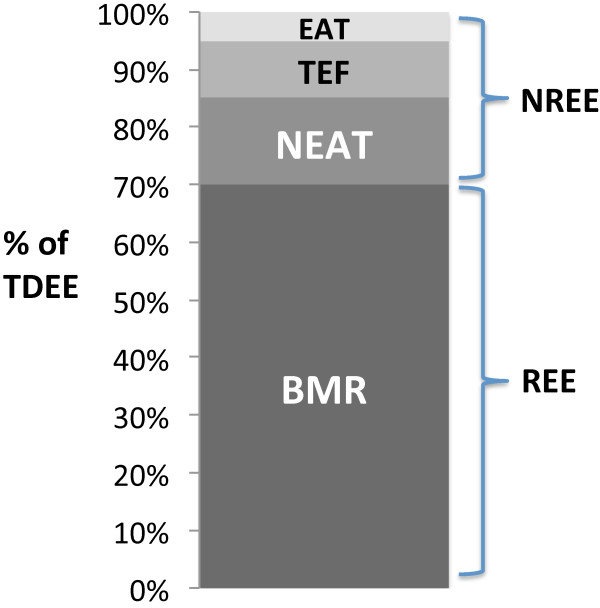Exercise and reducing body fat have long been associated with one another. Or, at least since infomercials were a thing! Who could forget ads for home exercise equipment like the thighblaster or abmaster? These tools claim to tone, sculpt and shed fat from your thighs and abs respectively. However, these claims are unsubstantiated. Evidence scarcely shows that exercise explicitly should be used for “burning fat” despite what our gut feeling may tell us. In fact, even when studied under highly specific conditions, we can’t “spot reduce” body fat by targeted exercise. Instead, by using more energy than being sedentary, and, building muscle mass, we may influence body fat levels (1). So, why exercise? Well, for many reasons! We support the role of exercise in managing long term health outcomes such as managing bodyweight, cardiovascular, metabolic and musculoskeletal disease and, improving quality of life.
Build, don’t burn!
We believe it’s important to have an additive mindset with behaviour change. For instance, rather than exercising solely to burn fat, focus on increasing exercise performance. Complementary behaviours will contribute to this process. For example, dietary changes such as increasing protein and fibre intake alongside reducing processed foods will likely help you perform better and reduce total calorie intake. Typical “Fat burning workouts” such as high rep circuits with little resistance and rest are not ideal for building muscle. Instead, focus on getting stronger, rather than fighting an uphill battle trying to “outwork” an inappropriate dietary pattern. Our bodies have been shown to intelligently downshift energy expenditure outside of training (6). Considering our daily energy expenditure from activity already is low, exercising to burn fat is a misallocation of resources (7).
Long term health outcomes and body fat
Although we know exercise alone isn’t ideal for burning body fat, it is part of a comprehensive strategy to lose excess weight. A review showed that despite exercise alone playing a small role in weight loss, “physical activity may be an important component of weight maintenance after weight loss” (2, 3) Whether it’s weight management or loss that’s the goal, we should exercise. This is especially true as being overweight or obese is harmful to our long-term health (4, 5). Meeting or exceeding physical activity guidelines additionally help with the management of many other diseases. This includes metabolic disease (such as diabetes), cardiovascular disease, and musculoskeletal diseases such as sarcopenia and osteoarthritis. Focusing on the myriad of other positive outcomes also means that people are less likely to be discouraged to stop training even if the scales don’t shift as much as they’d like.
Do the things you love
Exercise is key to a fulfilling life, but obstacles like lethargy, aches, or body image concerns can hinder us. These can improve in part by meeting physical activity guidelines. You might not love exercise but linking it to meaningful outcomes can help you push through. Some are motivated by setting new Personal Bests, while others aim to regain the ability to jog or lift grandchildren. Finding your “why” is crucial. If aesthetics is your goal, we acknowledge that too. It’s a valid feeling to want to look better which often helps us feel better. Plus, who doesn’t love a set of Biceps Curls? So, although a set of Squats or Deadlifts, or a few sprints on the Assault Bike aren’t the most comfortable experiences, knowing they relate to an important end goal makes them all the more bearable.
Look beyond body fat
Managing body fat is a common goal, and physical activity is important for this, but it’s not the only factor. Focusing solely on exercise for fat management overlooks its other benefits. Additionally, relying on exercise as punishment for dietary choices isn’t healthy or sustainable. Don’t miss the forest for the trees. Embrace physical activity for its overall benefits to your health and quality of life. For fat loss, consider a holistic approach of long-term dietary changes, physical activity, sleep quality and food environment changes. If you’re looking for guidance related to exercise and your health, reach out to our team at Sydney Strength Training.
References:
- Effect of combined resistance and endurance exercise training on regional fat loss – PubMed (nih.gov)
- Role of Physical Activity for Weight Loss and Weight Maintenance – PMC (nih.gov)
- Exercise and Fitness Effect on Obesity – StatPearls – NCBI Bookshelf (nih.gov)
- Obesity and overweight (who.int)
- Adult obesity complications: challenges and clinical impact – PMC (nih.gov)
- Constrained Total Energy Expenditure and Metabolic Adaptation to Physical Activity in Adult Humans: Current Biology (cell.com)
- (PDF) Metabolic adaptation to weight loss: Implications for the athlete (researchgate.net)

